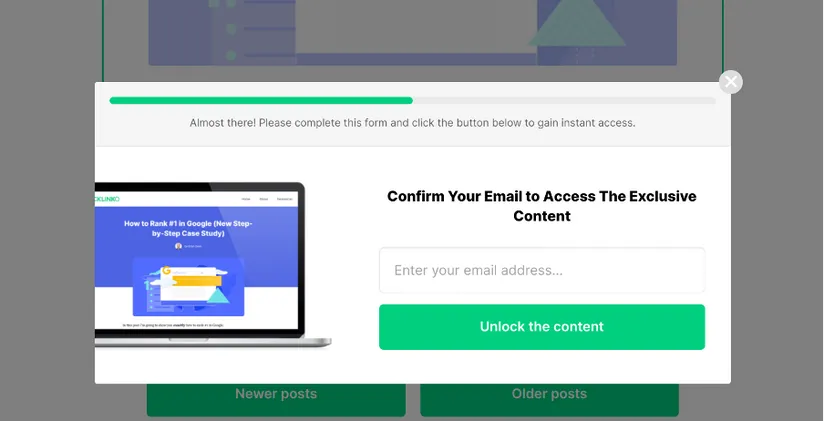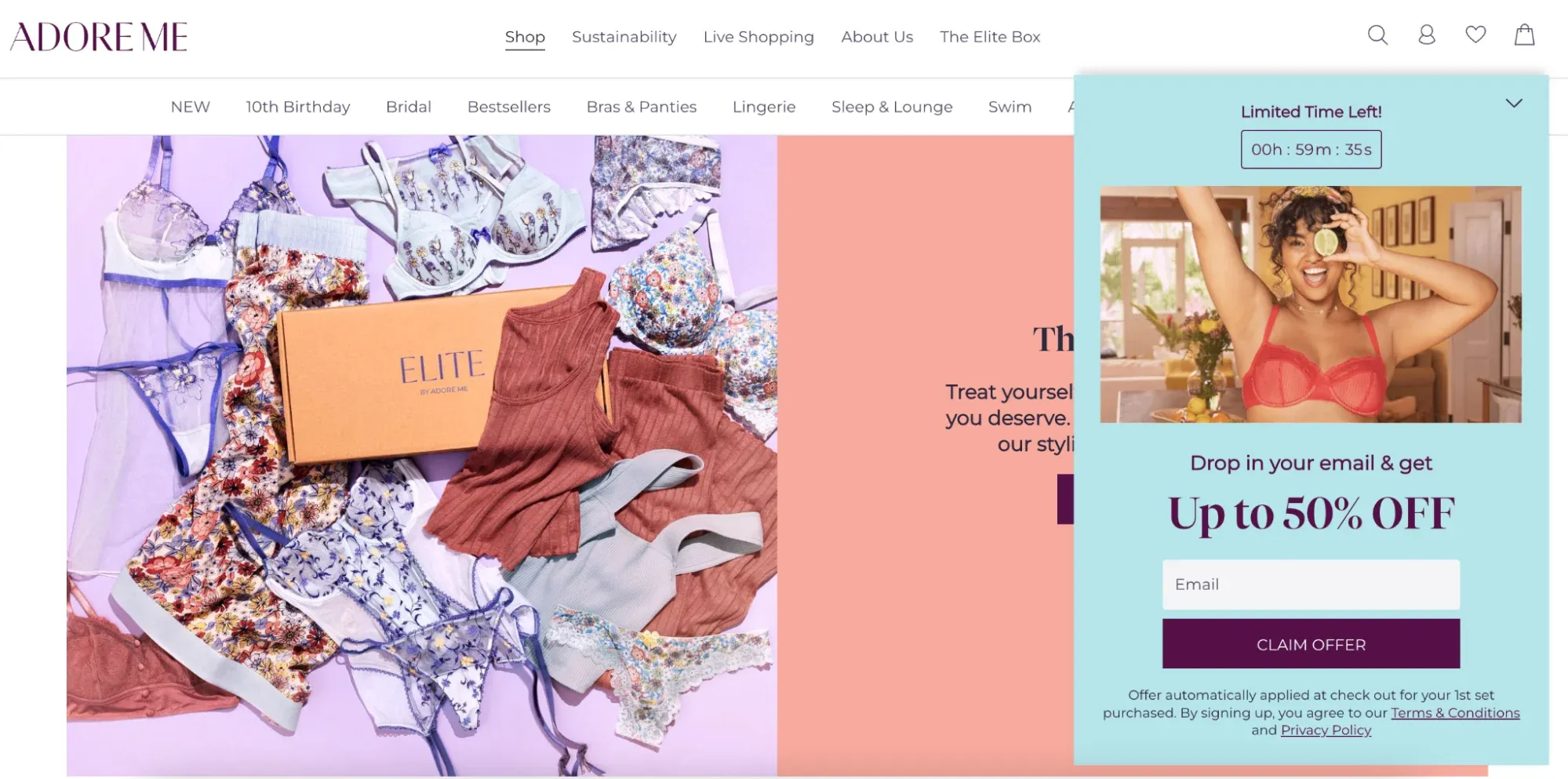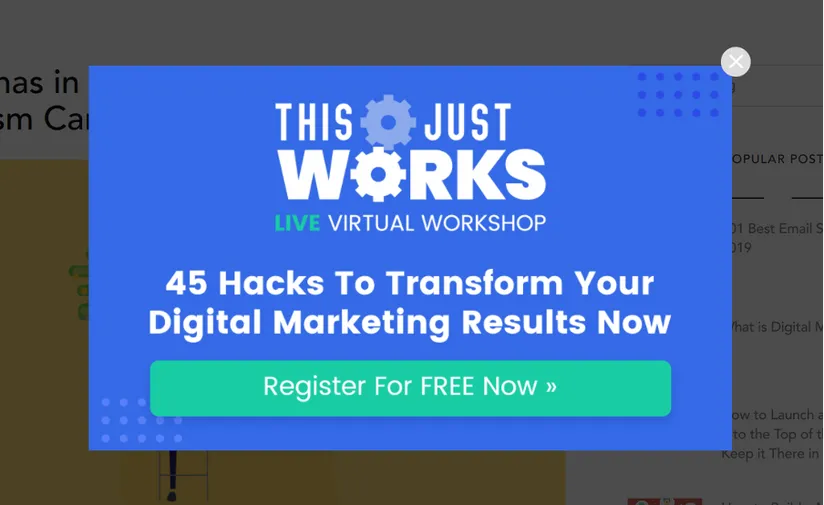
Pop-ups for e-commerce vs content blogs: which strategy to adopt?
Are pop-ups miracle tools to boost your online activity or harmful distractions for your visitors? It all depends on your objective. In the world of e-commerce, they increase sales; for content blogs, they retain the audience. Each strategy has its strengths and limitations, and choosing the right approach can transform your results. Discover in this article how to adapt the use of pop-ups to your needs to maximize their impact and provide an enriching experience for your visitors!
Pop-ups for e-commerce: maximize conversions
In the e-commerce field, pop-ups are powerful tools to encourage visitors to take action quickly. Their main goal is to stimulate conversions by capturing attention at strategic moments. When used precisely, pop-ups can generate immediate sales while enhancing the user experience.

Main objective: sales
Pop-ups in e-commerce are often used to offer irresistible deals, such as a discount code for a first order or a limited-time promotion. For example, a study from Sleeknote shows that well-designed pop-ups can increase conversion rates by an average of 3.09 %.
Effective types of pop-ups
- Exclusive offers: “Get 15% off your first order by subscribing.”
- Limited stock alert: “Only 3 items left!”
- Exit pop-ups: encouraging users to complete an abandoned cart before leaving the site.
Risks to manage
However, if misused, pop-ups can frustrate visitors. It is crucial to pay attention to their design, timing, and frequency. For example, avoiding displaying a pop-up immediately after a visitor arrives helps provide a better experience.
Pop-ups for content blogs: building an engaged audience
In content blogs, pop-ups play a different role, focused on reader retention and engagement. Unlike e-commerce, where the goal is to convert quickly, here the main objective is to capture leads and build a lasting relationship with the audience.

Main objective: retention
Blogs use pop-ups to encourage readers to subscribe to a newsletter, download exclusive content, or participate in events. For example, a blog on digital marketing might offer a free e-book in exchange for an email subscription. According to a study by OptinMonster, targeted pop-ups can increase sign-up rates by up to 86%, proving their effectiveness in lead collection.
Effective types of pop-ups
- Exit pop-ups: appear when a user is about to leave the page, offering a deal or free resource.
- Timed pop-ups: displayed after the user has spent a certain amount of time on the site, showing content tailored to their interest.
- Scroll pop-ups: activated when the visitor has scrolled a specific percentage of the page.
Best practices to optimize user experience
It is essential not to overwhelm readers: a single well-targeted pop-up is preferable to an abundance. Personalize the message based on the visitor’s interests and ensure that your offer provides real added value. For example, a simple newsletter sign-up could be enhanced by the promise of exclusive tips or a free guide.
Which strategy to adopt?
Choosing between pop-ups for e-commerce or for a content blog depends on your objectives and the nature of your activity. A well-defined strategy tailored to your audience guarantees optimal results.

Choose based on your goals
For e-commerce sites, where quick conversion is essential, targeted pop-ups to encourage immediate purchases are particularly effective. They help reduce cart abandonment, promote flash sales, or encourage visitors to take advantage of a limited offer. In contrast, content blogs, focused on engagement and retention, find more success with pop-ups that collect leads or encourage subscriptions.
Adapt practices to your audience
It is crucial to test different formats and messages to understand what works best for your audience. For example, a cooking blog can test a pop-up offering a free recipe e-book, while an e-commerce site can compare the performance of an exit pop-up and a timed discount code. A study by HubSpot highlights that A/B testing improves pop-up performance by 49%.
Analyze performance
Whether it’s a blog or an e-commerce site, data analysis is essential. Track metrics such as click-through rate, conversion rate, and overall impact on user experience. This will allow you to optimize your efforts and adjust your strategies for the best results.
To maximize the impact of your pop-ups, choose a strategy tailored to your objectives. With Poosh, the number one pop-up notification solution, effectively capture leads and engage your audience while optimizing your conversions. Try it now!